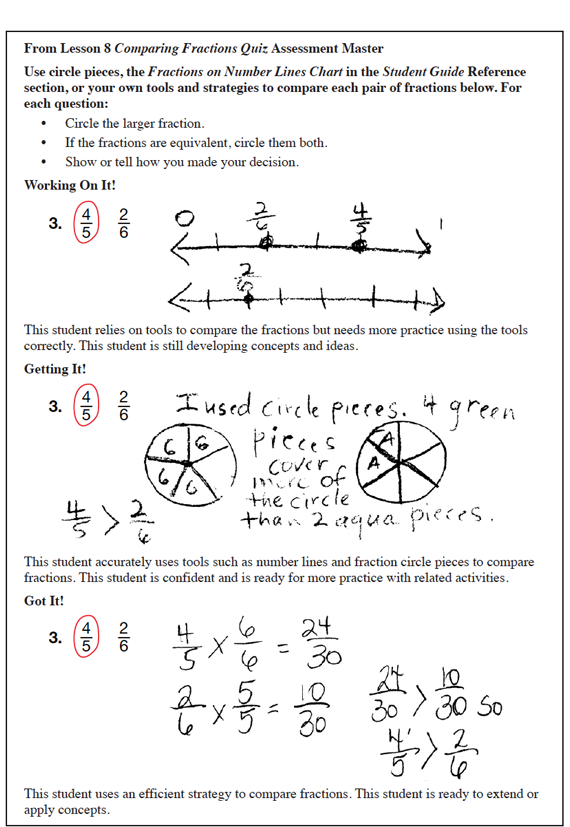Workshop: Problem Solving with Fractions
Est. Class Sessions: 2–3Before the Lesson
Review student work and progress from previous lessons to guide instructional decisions about the following Expectations:
- E6.
- Compare and order fractions using tools (e.g., area models, number lines), benchmarks, and multiplication and division strategies to find common denominators.
- E7.
- Add and subtract fractions including those with unlike denominators.
- E8.
- Use visual models or equations to represent the solution for word problems involving adding and subtracting fractions.
- E9.
- Use benchmark fractions to estimate sums and differences and assess the reasonableness of answers.
In Part 2 of the lesson, students will identify their level of confidence with a particular concept and choose problems from a Workshop Menu. See the TIMS Tip for more about Workshop Menus. Use your own evaluation of students' progress to help guide their choices. Review student work samples in Figure 1 to interpret students' confidence levels with comparing fractions. The samples shown in Figure 1 are from Question 3 of the Comparing Fractions Quiz Assessment Master in Lesson 8.
Plan to organize the class into partners, small groups, or stations based on the problems they choose from the menus. Students can combine sets of fraction circle pieces. They can check each other's work and discuss solutions. Students may work with different groups or partners as the Workshop progresses.













